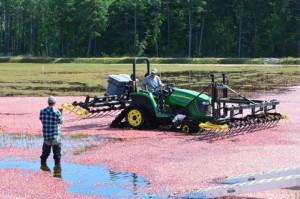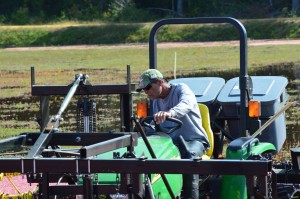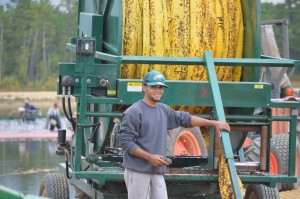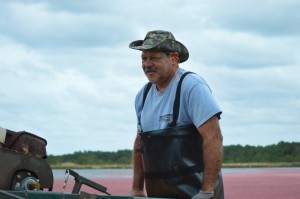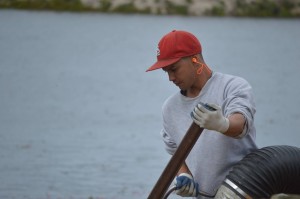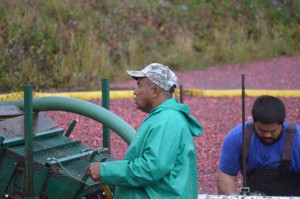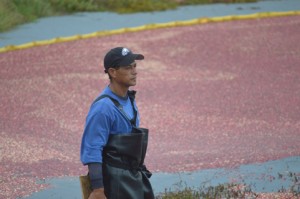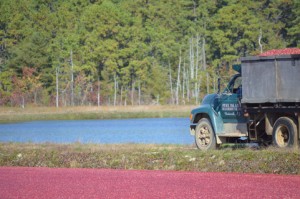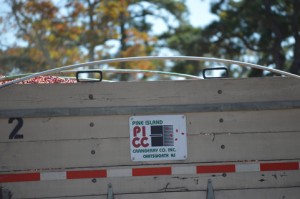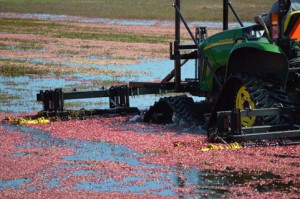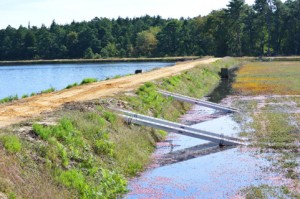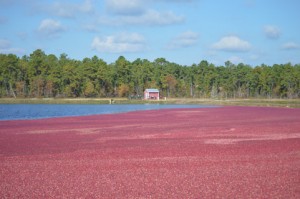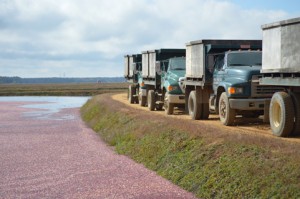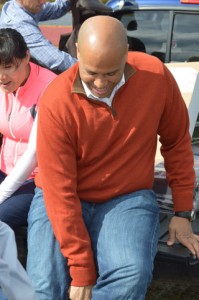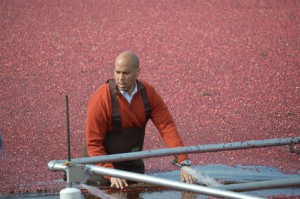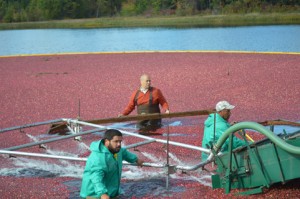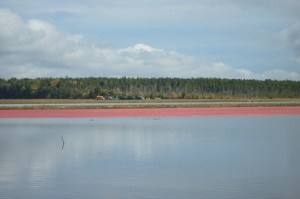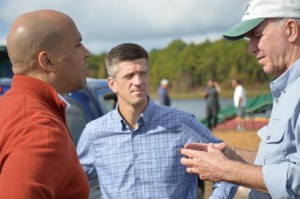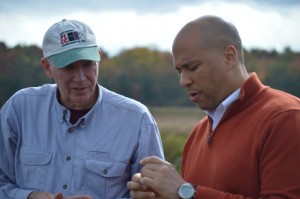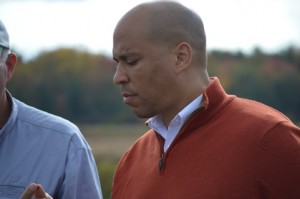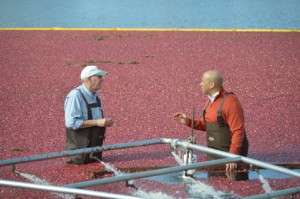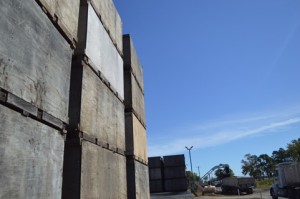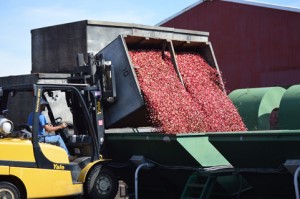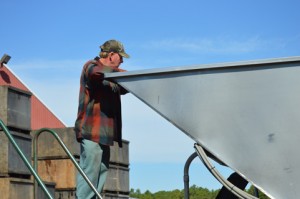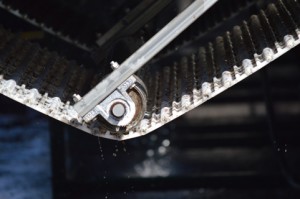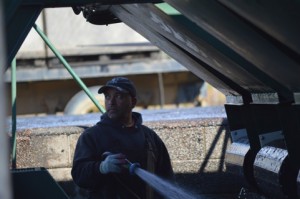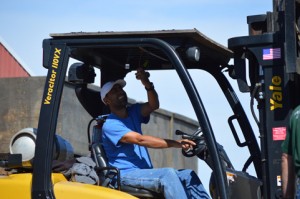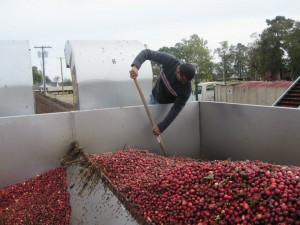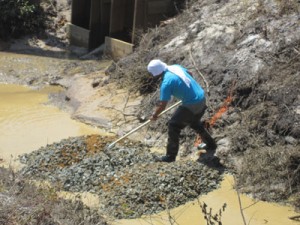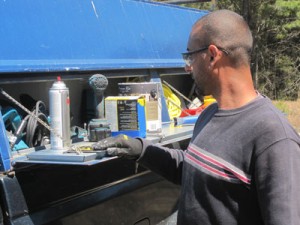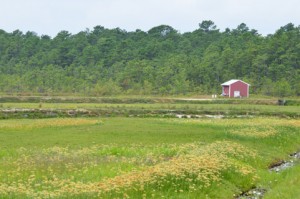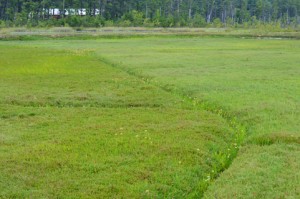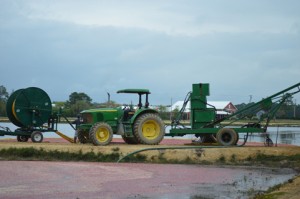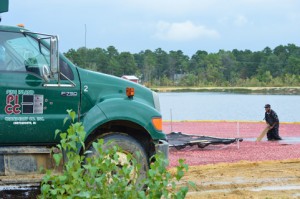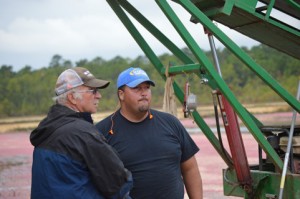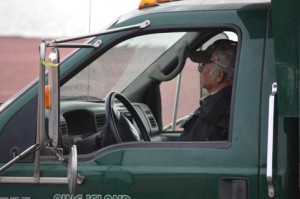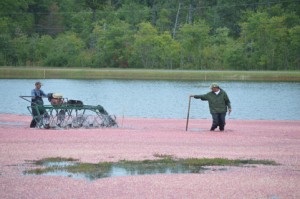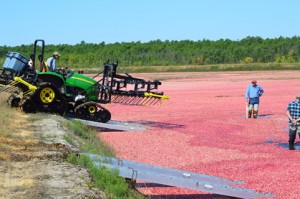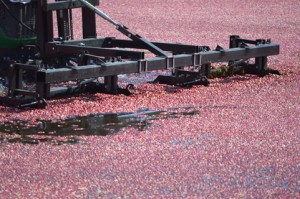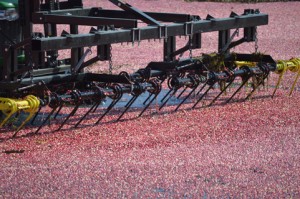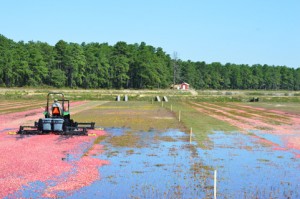Work on the renovation continues, but our team took a break in the middle of the week to celebrate a successful harvest and bid farewell to our seasonal team members until next year. The harvest lunch is always a good time, and this year CEO Bill Haines was especially pleased. “We learned a lot this year. We tried new tech and brought in the second biggest crop we’ve ever had: 316,000 barrels. And when you add up our working days, we did it on only 32 days. No one else can do that anywhere. And we also saw what the future looks like. Panama #6, our best renovated bed, is only four years old and had 493 barrels per acre. When you’re looking at the bogs we’re renovating now, you’re looking at our future. And our future is a great one, because we’re getting better at everything we do.”
He also had high praise for our team members in general. “Some of you leaving this week have been here since March, helping out with frost and everything else. You all did a great job with the harvest; you come back year after year to do whatever it takes, and we’re looking forward to seeing you next year. It’s been great to have you. And for our regular team: you all did a great job as well. Now we get to spend our winter building new bogs so we’re ready when these guys come back. We all learned how to do new things, and we’re going to keep doing that, because I know you’re up to it. I’m proud of our team: we have the best team in the industry, hands down, and it’s only the beginning.”
GM Fred Torres also had nothing but good things to say: “We really appreciate the help. Sometimes we ask these guys to come up last minute; we do try to give advance notice, but sometimes we need someone now, and they always show up. There are long hours during harvest, but we get through it and we appreciate their hard work and their time here. And we got a lot of work done after harvest in a very short time this fall, and we’re especially grateful for that.”
All three harvest team leaders, when asked about their crews, immediately answered that theirs was “the best”. Orange Team supervisor Gerardo Ortiz says: “They know what they have to do, and they do it. I trust them to do their job, and they trust me to be there if they need assistance.” Jeremy Fenstermaker agrees: “There is a strong element of trust, and these guys always have each other’s back. They’re hard workers.” Blue Team supervisor Matt Giberson: “We come together as a team, and we work hard as a team, and we do what needs to be done.” (And with Alberto Torres assigned to the Blue Team, Matt also thinks they have the edge on good food.)
With the help of such a fantastic team, Pine Island Cranberry continues to do everything we do better every day!

